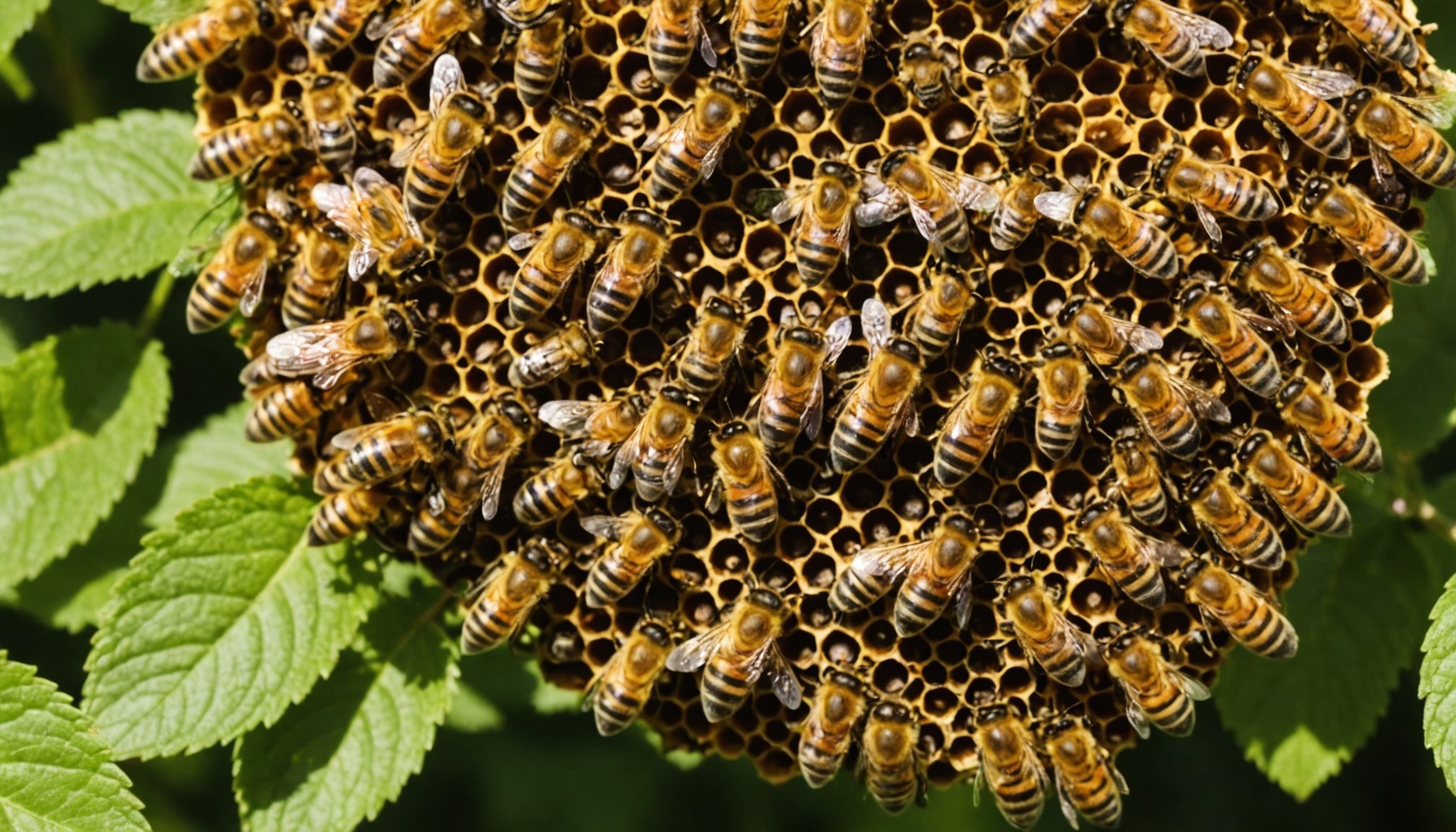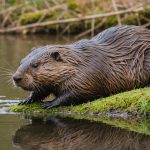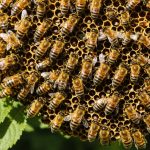Understanding Urban Beekeeping Essentials
Urban beekeeping is an evolving practice bringing numerous benefits to city environments. By maintaining bee colonies in cities, beekeepers not only support biodiversity but also enhance local agriculture, as bees play a crucial role in pollinating urban gardens and green spaces. This practice can substantially increase the yield and quality of local fruit and flower production.
The importance of bees within urban ecosystems cannot be understated. Bees contribute to the pollination of many plant species, which in turn support various wildlife, enrich green spaces, and contribute to cleaner air. Notably, the introduction of bees in urban areas can counteract pollination deficits resulting from habitat fragmentation and reduced plant diversity.
A lire en complément : Identifying Stress in British Reptiles: Signs to Watch For and Effective Relief Strategies
Urban beekeeping differs significantly from its rural counterpart. In urban settings, beekeepers face unique challenges, such as limited space, heightened public concerns, and strict local regulations governing hive placement and management. However, urban beekeepers also enjoy benefits such as a broader range of flowering plants available year-round, thanks to diverse city plantings and milder urban microclimates.
These differences necessitate a thorough understanding of urban beekeeping basics, allowing beekeepers to effectively adapt strategies used in rural settings to suit varied and sometimes unpredictable urban environments. Knowing how to successfully navigate these challenges ensures a sustainable and productive integration of bees into the bustling city life.
A lire également : Exploring the Hazards of Dog Walking Near Farm Animals in the English Countryside
Choosing the Right Hive
Selecting an ideal beehive for an urban setting can be pivotal in effective urban beekeeping. Space and aesthetics are crucial factors that influence this decision. In compact areas, a compact hive such as the Top-bar or Warre hive might be beneficial due to its smaller size and natural design, making it blend seamlessly with the surroundings. Urban garden aesthetics can greatly benefit from such hives as they provide natural appeal while efficiently housing bees.
Types of Beehives Suitable for Urban Environments
In tight urban environments, beehive selection often revolves around space-saving designs. The Langstroth hive is popular due to its modular structure, which allows for stacking additional boxes as needed. Conversely, the Warre hive, with its simple, narrow structure, is ideal for gardens wanting a minimalist approach. Each type offers unique benefits tailored to different beekeeping needs.
Considerations for Placement
When placing beehives in an urban garden, accessibility for routine hive checks and proximity to flowering plants are important. Safe placement minimizes disturbance from human activity and provides bees with a clear flight path. Ensuring adequate air circulation and sufficient sunlight exposure enhances growing conditions, aiding in hive vitality. By balancing aesthetic appeal with practical placement, urban beekeeping becomes a harmonious addition to city living.
Navigating Local Regulations
Urban beekeeping in the UK offers a buzz of excitement, and understanding the beekeeping regulations is vital for starting out on the right foot. To engage in urban beekeeping, it is crucial to familiarise yourself with local legal requirements. These often include obtaining permits and completing necessary registrations specific to your locale.
Many local councils in the UK require aspiring beekeepers to obtain registrations and permits. These ensure that hives are managed safely and sustainably, respecting the urban environment. Check with your local authority to understand the exact requirements in your area.
Communication with neighbours and the community can greatly influence the success of your urban beekeeping efforts. Address any concerns they may have about hive placement, bee behaviour, or potential allergies. Facilitating open dialogue fosters a sense of community and acceptance, while also ensuring that any apprehensions are tackled early on.
Moreover, joining a local beekeeping association can provide valuable resources and support. These communities often share best practices, regulatory changes, and support networks for both novice and seasoned beekeepers. Building these connections can be beneficial for meeting local beekeeping regulations and sustaining successful practices.
Site Considerations for Bee Hives
When evaluating hive location factors, it’s vital to consider several environmental aspects to ensure the health and productivity of your bee colonies. One crucial factor is sunlight. Bees thrive in sunny environments; hence, positioning hives where they’ll receive ample morning sun can enhance their activity. Sunlight not only stimulates bees but also helps reduce moisture build-up, keeping the hive dry and healthy.
Wind exposure is another significant consideration. Excessive wind can be detrimental to bees, contributing to heat loss and making flight difficult. It’s advisable to locate hives in areas with natural barriers like hedges or large structures providing shelter against strong winds.
The proximity to flowering plants and natural water sources profoundly affects bee productivity. A location rich in diverse flora ensures a continuous nectar supply, essential for honey production. Bees also need access to water for cooling the hive and diluting stored honey.
Minimizing disturbances in urban settings requires strategic planning. Urban areas often pose challenges with noise and movements. Placing hives in quieter spots, perhaps shielded by bushes or fences, can help. Additionally, elevating the hives keeps away pets and reduces foot traffic interference, promoting a calm environment for your bees.
Selecting the Right Bee Species
Urban gardens boast a unique environment requiring careful selection of bee species to boost ecosystem health. When choosing, consider popular species that thrive and support biodiversity in cities. Among these, the honeybee and bumblebee are well-suited for urban environments.
Honeybees are known for their excellent productivity, often making them the backbone of pollination efforts in gardens. Their ability to form large colonies enables efficient workspace management in confined surroundings. Bumblebees, on the other hand, are robust, tolerate cooler conditions, and exhibit calm temperaments, reducing the likelihood of stinging incidents.
Additionally, exploring the characteristics of each species is paramount. Honeybees, while productive, need more space for nesting. Conversely, bumblebees occupy smaller colonies and require fewer expansion setups. Both species, however, contribute significantly to pollination and plant productivity.
Consider sourcing bees from reputable local suppliers who specialize in urban gardens. Sourcing from local environments ensures adaptability and the sustainability of existing bee populations. Alternatively, capturing swarms, if done safely and legally, can also introduce resilient local bees into your garden ecosystem.
Ultimately, matching the temperament and productivity traits of bee species with urban conditions can foster a thriving, harmonious garden environment.
Feeding Your Bees
For any beekeeper, understanding the nutritional needs of urban bees is crucial to maintaining healthy hives. Bees require a balanced diet rich in proteins, carbohydrates, vitamins, and minerals, which they typically obtain from pollens and nectar. Urban environments, however, can sometimes lack consistent food sources due to limited floral diversity or availability, necessitating supplemental feeding.
Best practices for supplemental feeding involve providing bees with sugar syrup or protein patties, which can compensate for natural food shortages. It’s important to adjust the sugar concentration: a 1:1 sugar-water ratio in spring encourages brood rearing, while a 2:1 concentration in fall helps bees strengthen their reserves for winter.
Seasonal feeding strategies are essential during periods of scarcity, such as early spring or late autumn. In spring, early supplementation helps jumpstart hive activity after the long winter. In contrast, autumn feeding focuses on preparing the colony for the cold months ahead, ensuring they have enough stores to survive when forage is sparse.
Adhering to these bee feeding practices helps support colony health and productivity, paving the way for successful beekeeping in urban locales. This approach ensures bees have access to the necessary nourishment when natural forage falls short.
Effective Pest Management
In the thriving world of urban beekeeping, maintaining healthy beehives is critical. Pest control is a major concern, as various pests and diseases can threaten the wellbeing of your bees. Common pests affecting beehives include the dreaded Varroa mite, small hive beetles, and wax moths. These pests can significantly weaken or even destroy colonies if not managed proactively.
Urban Beekeeping Pest Control
To counter these threats, adopting integrated pest management strategies is essential. This approach combines chemical, biological, and mechanical tactics to manage pest populations effectively. Monitoring hives regularly for signs of pests, maintaining hive cleanliness, and rotating chemical treatments can bolster the defence against these adversaries.
Natural predators play a prominent role in urban settings to keep the ecosystem balanced. Encouraging the presence of birds or beneficial insects that prey on hive pests can provide a sustainable solution. Introducing predator insects, such as ladybugs or praying mantises, can help reduce harmful pest populations naturally.
Understanding the interplay between these strategies allows urban beekeepers to manage pests effectively, ensuring their beehives remain vibrant and healthy. By integrating methods suited to an urban environment, beekeepers can protect their bees from harm’s way while fostering a robust local ecosystem.
Learning from Experienced Urban Beekeepers
Venturing into urban beekeeping can be a rewarding yet challenging experience. Urban beekeeper insights reveal a plethora of success stories, often underpinned by dedication and adaptability. Experienced beekeepers frequently cite the triumph of nurturing thriving colonies amidst city confines. However, they also acknowledge challenges such as navigating municipal regulations and managing limited green spaces.
For those eager to embark on this journey, seasoned beekeepers offer several recommendations. Engaging with the local environment is crucial, particularly in assessing the availability of flora and managing hive dynamics to suit urban conditions. Beginners should equip themselves with comprehensive knowledge about bee biology and hive management, gradually honing their craft.
Another valuable insight highlights the importance of joining beekeeping clubs and online communities. These platforms provide novice beekeepers with essential support, shared knowledge, and camaraderie, enriching the beekeeping experience. Clubs often organise workshops, fostering practical skills and encouraging community engagement. Online networks offer convenience, connecting enthusiasts worldwide and enabling real-time advice exchange.
By venturing into such communities, new beekeepers can benefit from collective wisdom, avoiding common pitfalls and expanding their urban beekeeping repertoire. These connections are invaluable, offering both practical solutions and inspirational stories that resonate within the urban beekeeping realm.
Resources for Further Learning
Engaging in beekeeping in the UK can be enhanced with the right guidance and access to quality resources. If you’re eager to deepen your understanding and skills, consider some of the following beekeeping resources.
Starting with books, “Beekeeping for Dummies” and “The Beekeeper’s Bible” offer comprehensive overviews suitable for beginners and seasoned enthusiasts alike. These publications delve into bee biology and the practicalities of hive maintenance.
Websites can also be invaluable for up-to-date information. The British Beekeepers Association’s website provides an extensive range of materials and expert advice. Similarly, the BeeBase, hosted by the National Bee Unit, includes resources on bee health and management practices.
For a more interactive approach, online courses such as those offered by the Open University can provide both theoretical and practical knowledge. These courses often include video demonstrations, quizzes, and forums to discuss with peers and mentors.
Local workshops and mentoring programs are especially valuable to gain hands-on experience. Many regional beekeeping associations organise such events, where novice beekeepers can learn from experienced beekeepers and form supportive networks.
Lastly, local agricultural extensions can be a wealth of support, often offering workshops, field days, and access to subject matter experts who can assist with beekeeping queries in your specific locale. Leveraging these local resources can greatly enrich your beekeeping journey.













